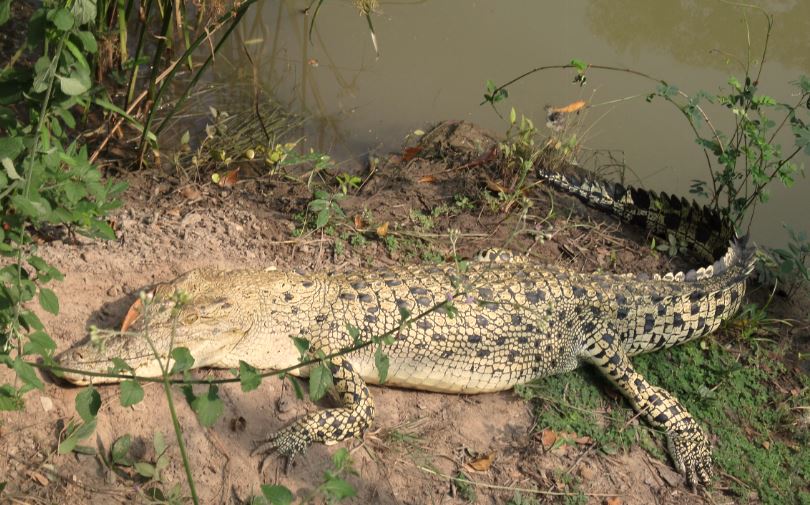Kendrapara : Bhitarkanika national park in Odisha has re-established itself as the country’s most preferred habitation corridor for albino estuarine crocodiles with wildlife enumerators re-sighting 20 rare white crocodiles in the brackish water bodies and water-inlets along the wetlands of the park.
The population of salt-water crocodiles has marginally increased in 2023 as per the annual reptile census with the counting of 1,793 crocodiles including 20 whitish estuarine crocodiles whereas, in 2022, their number was 1,784.
Estuarine crocodiles are also found in West Bengal’s Sundarbans, having the country’s largest mangrove cover. Besides, the mangrove wetlands in Andaman Islands are home to these species, but the population of crocodiles in wild habitats of Bhitarkanika is much higher in density, said crocodile researcher Dr Sudhakar Kar, who led the census team to count these reptiles.
“During the census, we sighted 569 hatchlings (two feet), 388 yearlings (2-3 feet), 325 juveniles (3 to 6 feet ), 166 sub-adults (6 to 8 feet long) and 345 adults reptiles (more than 8 feet long). Bhitarkanika is also home to 20 whitish crocodiles as per the reptile census report”, Kar said.
The Union Government had collaborated with UNDP for conservation of crocodiles in 1975. Then, the population of salt-water crocodiles in the Bhitarkanika area stood at 95, including 34 adults. Now, the population has swollen to 1,793 as per the latest census report released Saturday.
The crocodile conservation programme had been launched in 1975. Then two white crocodiles had been found inhabiting the Bhitarkanika water bodies. Last year, 16 white crocodiles had been sighted, he said.
As albino reptiles have been re-sighted, the brackish water bodies of the national park have emerged as favourable habitation corridors for white crocodiles.
The typical complexion of these reptiles was mainly due to the genetic pigment malformation and mutant variation.
Apart from the 20 white crocs sighted in the wild, Bhitarkanika is also home to two other adult white crocodiles living in captivity in the park’s enclosure.
The 48-year-old female albino crocodile ‘Gori’ living in a pen inside the national park is a major tourist attraction. The 12-foot-long Gori, hatched and bred by the Odisha forest department as part of crocodile conservation programme, used to hog the spotlight over the years for its typical behavioural instinct.
Living in captivity since its birth in the national park, the animal continues to shun mating habits. It had rejected companionship on several occasions in the past, Kar said.
The national park is crisscrossed by innumerable water inlets, creeks and nullahs all forming the part of Bhitarkanika river system.
The enumerators extensively covered vulnerable riverside villages where reports of man-croc conflict had reached a flashpoint in the recent past. However, the sighting of these reptiles was few and far between. More than 70 per cent of crocs were sighted in the water-bodies in the core area of the National Park.
-PTI
